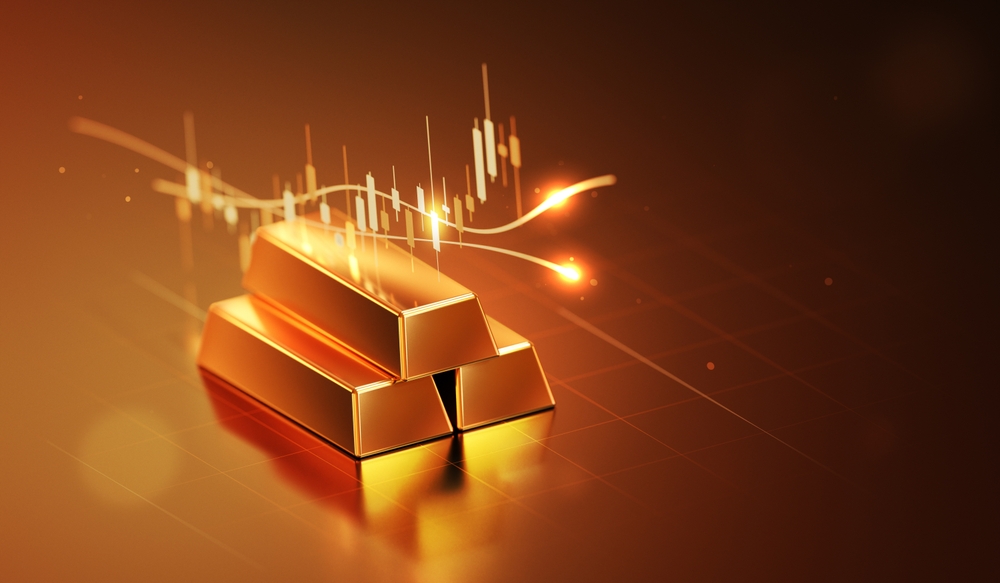Warning on risks: Financial contracts for difference are complex instruments and are associated with a high risk of rapid financial losses due to leverage. On 72.29% of retail investor accounts, financial losses occur when trading financial contracts for difference with this provider. You should consider whether you understand how financial contracts for difference work, and whether you can afford to take the high risk of suffering financial losses. Please read the Risk Disclosures.


Gold Breaks Records: What Drives Its Rise and How Do Other Precious Metals React?
U.S. Monetary Policy as the Main Growth Driver
Gold prices reached a new all-time high when the Comex December 2025 futures contract surpassed $3,820 per ounce as of September 23.* This development is not the result of a single factor but a combination of macroeconomic and geopolitical circumstances that strengthen demand for the traditional store of value. The key driver was the policy of the U.S. Federal Reserve. After keeping the base interest rate at 4.5% for ten months, the central bank cut it by 25 basis points in response to signs of slowing economic growth. Markets view this shift as the beginning of a new easing cycle, weakening the dollar and supporting non-yielding assets, particularly gold.

(5-year performance of the gold futures contract expiring December 25, 2025. Source: cnbc.com)
Uncertainty and Record Bank Purchases Push Gold Higher
The development of gold prices cannot be explained by monetary policy alone. Geopolitical factors and the behaviour of central banks themselves also play a crucial role. The war in Ukraine, tense trade relations and technological race between the U.S. and China, as well as ongoing instability in the Middle East are all increasing global uncertainty. In such an environment, gold becomes a natural “safe haven” that withstands monetary or political shocks. According to World Gold Council data, central banks bought about 415 tons of gold in the first half of this year, which is less than in the record-breaking first half of 2024 but still well above the long-term average. In the third quarter, another 166 tons were added, 41% more than the average quarterly figure of the past decade. The most active buyer is Poland, which has increased its reserves by 67 tons since the start of the year, followed by Kazakhstan and China, which has been consistently adding to its holdings for ten straight months. Turkey and the Czech Republic each added around 2 tons.
Forecasts for Gold Reach as High as $4,000
The outlook for gold prices points to continued growth. The price has already strengthened by about 44% this year (as of September 23), and Deutsche Bank has raised its 2026 forecast to as high as $4,000 per ounce, citing expected Fed rate cuts, a weaker dollar, and continued record central bank purchases. [1]
Silver Keeps Up This Time
While gold dominates the headlines, silver is breaking its own records. In September, its price rose above $44 per ounce, the highest level in more than 14 years.* However, silver has specific fundamentals compared to gold – its price is influenced not only by investment demand but also by industrial consumption. The gradual transition to renewable energy (silver is used mainly in solar panels) and the development of new technologies mean that demand for silver is growing faster than supply can keep up with. These trends are also linked to the rise in platinum and palladium prices (although palladium’s long-term trend is downward), which reacted more moderately to market developments. Their demand is closely tied to the automotive industry, where they are used in catalytic converters. The rise of electric mobility and technological changes in the sector are reshaping demand structures, which is reflected in price volatility. These metals remain interesting from an industrial use perspective, but their price development is more cyclical than that of gold or silver.

(5-year development of the silver futures contract expiring December 25, 2025. Source: cnbc.com)
What Could Halt the Rise? Inflation, the Dollar, and a Geopolitical Storm
Although current conditions are very favourable for precious metals, they are no guarantee of quick profits. The first risk is that the Fed may lower expectations regarding rate cuts. Everything depends on whether inflation rises again, or the economy unexpectedly strengthens. Such a scenario could unsettle investors and trigger price corrections. Another factor is geopolitical uncertainty caused by wars, trade disputes, and problems in global supply chains, which can increase volatility. For silver specifically, if industrial production slows in the mentioned sectors, its price could lose some momentum. Liquidity is also an important issue, as investing in physical precious metals, ETFs, or futures has both advantages and disadvantages. Investors who do not trade in U.S. dollars must also pay attention to currency risk, as dollar movements can strongly affect expected returns.
Conclusion
Precious metals are reflection of the ongoing events. Their performance reflects market sentiment, confidence in monetary policy, and fears of geopolitical uncertainty. The fact that gold and other precious metals attract so much attention shows how closely financial markets are tied to social and technological changes. Metals thus remain not only a barometer of economic expectations but also a reminder that even in an ever-changing reality, some values retain lasting significance.
* Past performance is not indicative of future results.
[1] Forward-looking statements are based on assumptions and current expectations, which may be inaccurate, or on the current economic environment, which may change. Such statements are not guarantees of future performance. They include risks and uncertainties that are difficult to predict. Actual results may differ materially from those expressed or implied in any forward-looking statements.